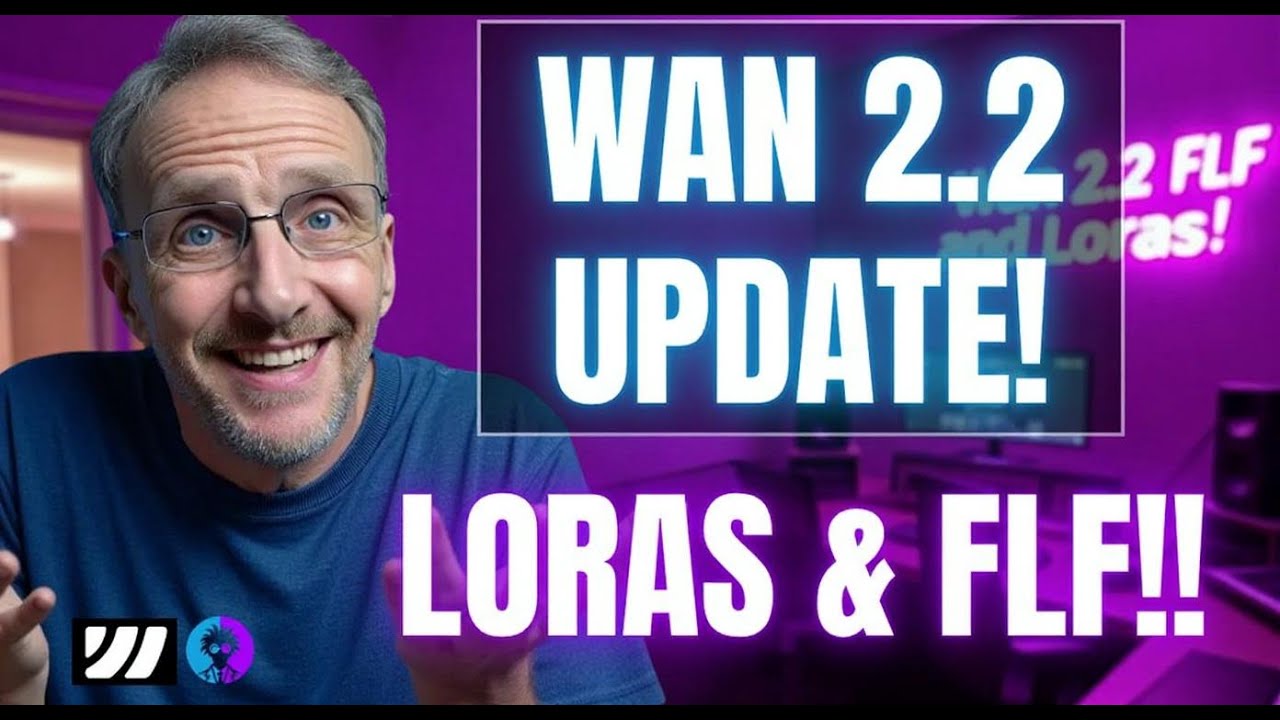The video showcases the Juan 2.2 AI video model on the Wave Speed platform, highlighting new features like smooth animation transitions using first and last frames and custom Loras for consistent character faces, enabling filmmakers to create high-quality, personalized AI-generated videos affordably and efficiently. It also details the process of training and integrating custom Loras, empowering users to insert themselves or specific characters into videos with realistic motion and lighting, all without subscription fees.
The video provides an update on the Juan 2.2 AI video model, a free and open-source tool for creating AI-generated videos. The presenter highlights new techniques using this model, specifically the use of first and last frames for smooth animation transitions and custom Loras to maintain consistent character faces throughout a production. These features are particularly useful for filmmakers seeking ultimate control over their AI-generated content. The video emphasizes that users can access these capabilities quickly and affordably without subscriptions, paying only for what they generate on the Wave Speed platform.
Wave Speed is introduced as a fast and cost-effective hub for various creative AI APIs, including image and video models. The platform offers multiple versions of the Juan 2.2 model, such as ultra-fast and different resolution options like 480p and 720p. The presenter demonstrates how to use the imagetovideo 720p version with a start and end frame to create seamless animations, such as a woman walking and sitting on a beach or a camera dolly moving smoothly around a person in a studio. The platform’s ability to generate longer videos (up to 8 seconds) compared to other services is praised for producing higher-quality animations without abrupt cuts.
Another impressive example shown is the transformation of a woman sitting at a bus stop into a scene with a giant creature emerging, all within a short 5-second clip. This showcases the model’s ability to interpolate complex scene changes smoothly. The video also explains how users can create custom character Loras by uploading a few images and training a model in about 10 minutes using Wave Speed’s Laura trainer, originally designed for version 2.1 but compatible with 2.2. These custom Loras enable users to insert themselves or specific characters into AI-generated videos with consistent likeness and realistic motion.
The process of creating and using custom Loras is detailed step-by-step, including compressing images into a zip file, uploading them to the trainer, assigning a trigger word, and hosting the resulting model file on platforms like Amazon AWS or Hugging Face. The presenter demonstrates how to integrate the custom Laura into text-to-video prompts on Wave Speed, allowing for personalized video content such as dancing or holding signs with accurate lighting and environmental effects. The cost-effectiveness of this approach is highlighted, with examples showing how a modest budget can generate numerous high-quality videos.
In conclusion, the video encourages AI filmmakers to explore these powerful and affordable tools for creating seamless animations and personalized characters using the Juan 2.2 model and Wave Speed platform. The presenter reassures viewers that this is an independent recommendation based on personal experience, not a sponsored endorsement. The video invites those interested in AI creative techniques to subscribe for more content and emphasizes the value of these resources for anyone generating a lot of AI video content. The overall message is that with these accessible tools, filmmakers can achieve professional-quality AI videos quickly, cheaply, and with great creative control.
